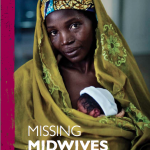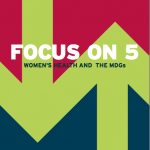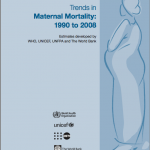THE ISSUE
World Health Organization defines maternal death as the death of a woman while pregnant or within 42 days of termination of pregnancy, irrespective of the duration and site of the pregnancy or its management, but not from accidental or incidental causes. Worldwide there are over 358,000 Maternal Deaths every year, leaving over 1 million children motherless. (We Can End Poverty 2015, 1). Over 99 per cent of these deaths occur in developing countries, accounting for over 355,000 deaths. (Trends in Maternal Mortality, 1).
Maternal Mortality is deeply entwined with the continuation of poverty. In 2000, 189 countries committed to ending extreme poverty worldwide through the achievement of the eight Millennium Development Goals. (Giving Birth Should Not be a Matter of Life or Death, 3). The fifth Millennium Development Goal is to reduce Maternal Mortality by three quarters before 2015. These global goals are, “widely accepted as the path to ending poverty.” However, less known is the fact that, “none of these goals can be achieved without more progress in promoting women’s reproductive rights and protecting maternal and newborn health.” (Women Deliver, 2). As reducing maternal mortality worldwide is not only an honorable goal itself, but is closely connected to all of the other MDGs, including “reducing poverty, reducing child mortality, stopping HIV and AIDS, providing education, promoting gender equality, ensuring adequate food, and promoting a healthy environment.” (Women Deliver, 3). Improving Maternal Mortality is particularly relevant to the reduction of infant mortality globally.
The death of a woman has far reaching effects on a community, but in particular her death affects the chances of her children’s survival. Everyday 10,000 newborn babies die adding up to nearly 4 million every year. In addition to that 3.2 million babies are stillborn. One third of whom die during labour. (Women Deliver, 9). 814,000 newborns die during childbirth every year. (Missing Midwives, 8). To put this further into perspective, “of the 8.1 million children who die every year before the age of five, one in ten dies during their birth and dos not live to see the end of their first day.” (Missing Midwives, 8). Most of these deaths occur without, “any formal health care, unrecorded, and invisible to all but their families.” (Women Deliver, 9). Likewise, childbirth becomes dangerous for the mother herself. Hemorrhage, sepsis, unsafe abortion, obstructed labor and hypertensive diseases of pregnancy cause 80 per cent of maternal deaths. These complications remain unpredictable, but very common. There are over 120 million pregnancies each year; “8 million result in life-threatening complications for the woman.” (Women Deliver, 15). By supplying adequate reproductive health services, equipment, supplies and skilled healthcare workers, the death of both mother and child becomes preventable. (We Can End Poverty 2015, 1).
Many of these lives could be saved if skilled birth attendants regularly attended births. Currently, “every year 48 million women give birth without someone present who has recognized midwifery skills,” and “more than 2 million women give birth completely alone, without even a friend or relative present to help them, making these some of the most dangerous moments of their lives.” (Missing Midwives, 7). It is estimated that there is a global shortage of 350,000 midwives. By filling the shortage of midwives in the world’s poorest countries, it is estimated that over 1.3 million babies could be saved each year. (Missing Midwives, 7). Life saving techniques can be taught to community health workers. Training community workers “to give basic advice to pregnant women, to treat some complications, and to encourage women to go to a clinic if there are problems” can have overwhelming results. (Missing Midwives, 11). Furthermore, if the “215 million women who would prefer to delay or avoid childbearing,” that “lack access to safe and effective contraception” were provided with safe and affordable methods of contraception a third of maternal deaths could be avoided. (We Can End Poverty 2015, 1). Governments who work to provide basic family planning and midwifery services have seen incredible improvements in maternal and newborn mortality statistics. (Missing Midwives, 6).
Not only will reducing maternal mortality save hundreds of thousands of lives each year, by investing in women governments see, “far-reaching economic and social benefits.” (Women Deliver, 4). Simply, women who are healthy and better educated are able to be more productive economically and within the community. Women are, “critical to ensuring healthy children, strong families and communities, and productive nations.” (Women Deliver, 5). A woman’s income is far more likely to improve the circumstance of her family and community, as it has been shown that woman is more likely to invest in, “food, education, medicine and other family needs.” (Women Deliver, 5). According to UNFPA, “the world loses $15 billion every year in productivity because of maternal and newborn mortality.” (Women Deliver, 4). While the delivery of the services required to make, “significant improvement in maternal health is estimated to cost less than US$1.50 per person in the 75 countries where 95% of maternal mortality occurs.” (Women Deliver, 4). Yet funding for maternal health and family planning has declined sharply between 2000 and 2008. (We Can End Poverty 2015, 1). UN Secretary-General Ban Ki-moon admitted that MDG 5, “stands the slowest-moving…of all the MDGs.” (Women Deliver, 11).
To become more informed about the issues surrounding maternal mortality world-wide, click on the following images to be redirected to the publications quoted in this article:



